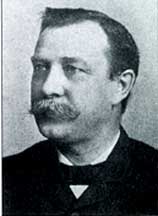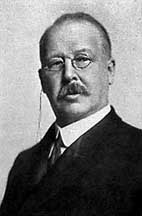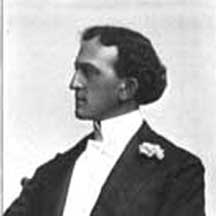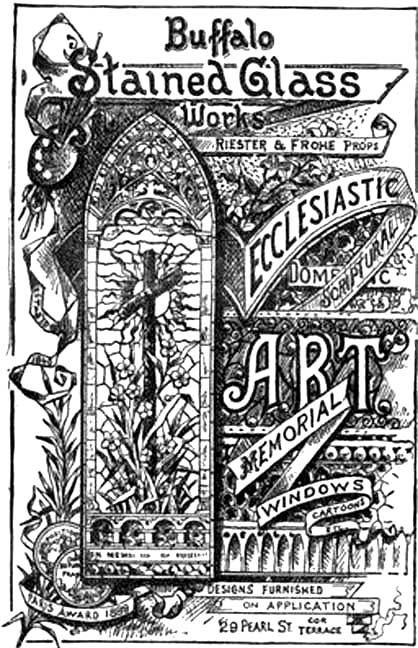
The
Frohe Family ........................ Stained Glass
- Table of Contents
Buffalo Stained Glass Works
|
Partial
reprint
"Aesthetic
Industry: The Buffalo Stained Glass Works"
By Gregory L. Witul Western New York Heritage, Winter 2010, pp. 46-53 ..............    Ferdinand Riester ......... Leo P. Frohe .......... Otto F. Andrle Riester and Frohe photos courtesy of Gregory L. Witul Andrle photo courtesy of Christopher Andrle  The opening of the Erie Canal made Buffalo one of the epicenters of industry in the United States. From grain to steel, Buffalo had it all. But one often overlooked industry from Western New York is stained glass. Starting in 1845 Buffalo was home to one of the earliest stained glass manufactures in America, the Buffalo Stained Glass Works. This studio, started in the back room of a paint store, eventually produced windows for over eight hundred churches, homes and businesses, won international awards and was called the "greatest stained glass firm west of New York City." .... By the end of 1861, the [Buffalo Stained] Works suffered from major financial problems ... In an attempt to save the firm, William Booth was brought in as junior partner. Then in 1864, Ferdinand Riester bought Charles Thurston out of the Glass Works to become the new junior partner. The "Golden Age" of the Buffalo Stained Glass Works was about to begin. Ferdinand (Fernando) Jean Baptiste Riester was born in Gouhenans, France, in March of 1840. At the age of nine he and his family left France and settled in Buffalo. Fernando received a public education and at the age of 14 became an apprentice of George L. Burns at the Glass and Enameller Studio at 106 Main. For the next 10 years, Riester studied the art of glass staining under Burns... Although an excellent designer, Riester's true strength was in the science of stained glass. Taking after his engineer father, Fernando studied chemistry, which allowed him to try innovations in the ancient art.... The year 1888 was pivotal for the Buffalo Stained Glass Works ... This was the year when William Booth retired and Riester became the sole owner. Then Franz Mayer of Munich, opened a New York office for the German stained glass firm. This new competition hurt the company's earnings but also spurred it to its greatest accomplishment. Paris, France, housed the World's Fair of 1889. Artists, architects and engineers the world over sent specimens and designs in hopes of winning a top medal in their field. The Buffalo Stained Glass Works sent a three-window set intended for the home of Mr. Riester, designed by manager Leo P. Frohe. Leo P. Frohe, born in the Netherlands,was the son of classically trained artist Gottfried Frohe. Taught by his father, Leo excelled at painting and drawing; under his father's guidance he also began working in stained glass. In 1880 he was hired as the designing artist and superintendent of the art department. For the Riester home, Frohe designed a a secular St. Cecila flanked by two jewel-and-floral-themed windows. Frohe's windows won the Paris Fair's silver medal. This represented tremendous recognition of the Glass Works and the American stained glass industry as a whole. A reporter at that time said, "It is one of the first times... that American glass, by American workmen, from American designs, that are distinctly American" competed with the "European masters in Europe" and won. Because of this triumph, Frohe was elevated to junior partner. Two of the last major undertakings of Riester & Frohe in the city of Buffalo were finished in 1891. The first project was for St. Louis Church on Edward Street. This, the oldest Catholic Church in the city, ordered 12 nave windows, 18 clearstory windows and two rose windows. They were prepared by one of the Works most talented designers, Otto F. Andrle ... The second major set of the year was for St. Columba, at Eagle and Hickory streets. The Works installed 20 decorative windows.... In 1895, Leo P. Frohe founded the Frohe Art Glass.... [In 1901] Fernando Riester passed away.... By 1905, it was all over. After 60 years of innovations, awards and accolades, the Buffalo Stained Glass Works quietly closed its doors and turned off the lights. |
  |
 "The Sacred Heart of Jesus" Buffalo Stained Glass Works, 1886 Ste. Anne de Detroit Catholic Church, Detroit, Michigan (online September 2019) "...
the Sacred Heart of Jesus, a vision seen by a seventeenth-century
French nun, Margaret Mary Alocoque. The Buffalo Stained Glass Works,
operated by Ferdinand J. Riester and Godfrey Frohe, created windows for
many churches in the late nineteenth century."
|
|
Buffalo Stained Glass Riester & Frohe windows Source:
St. Louis RC
Church archives
Buffalo:
|
The following were employed by Buffalo Stained Glass Works, but also started their own firms: Booth, Frohe, Myers, Burns |
Buffalo Stained Glass Works windows on Buffalo as an Architectural Museum:
- St. Louis RC Church Nave and clearstory windows / Rose window
- Richmond Avenue ME Church, Buffalo. Most of the windows. Partner William Booth was a church member. See the 2008 Nomination for specifics on windows.
Page by Chuck LaChiusa in 2009
| ...Home Page ...| ..Buffalo Architecture Index...| ..Buffalo History Index... |.....E-Mail ...| .
web site consulting by ingenious, inc